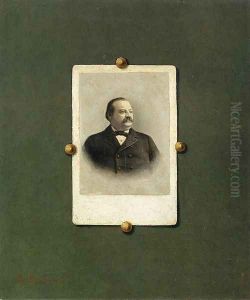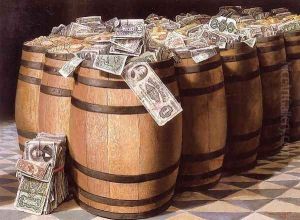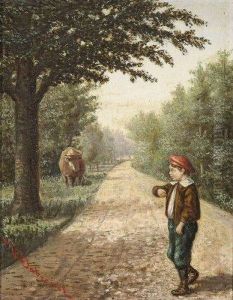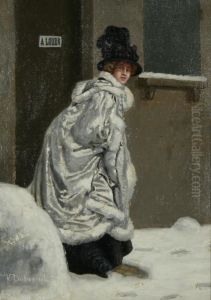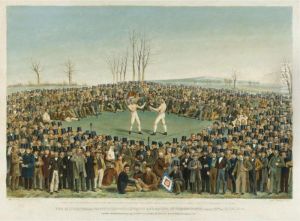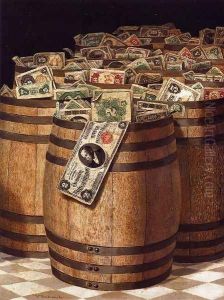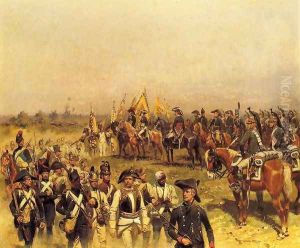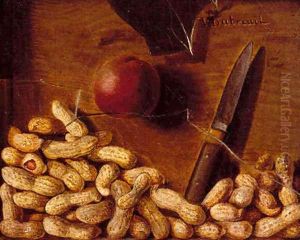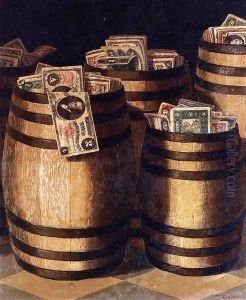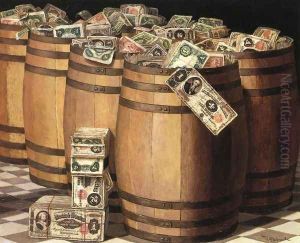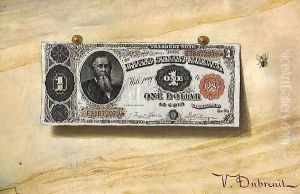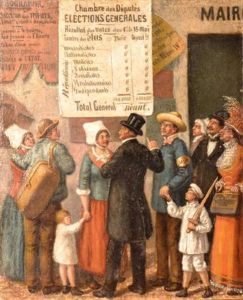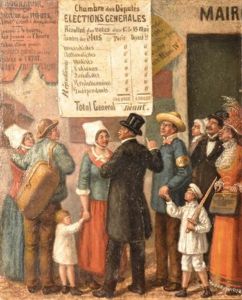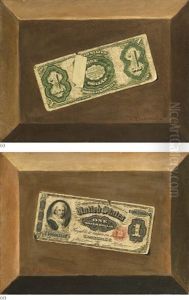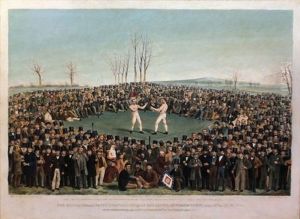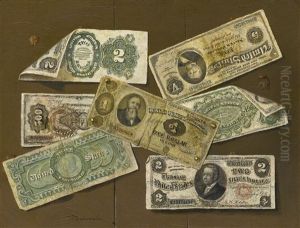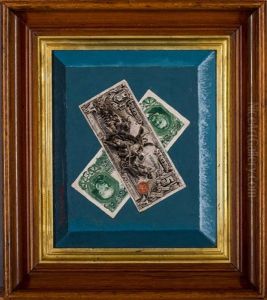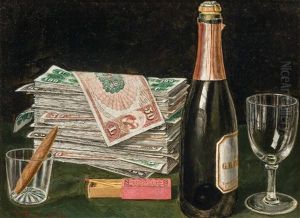Victor Dubreuil Paintings
Victor Dubreuil was a French-born American painter, best known for his trompe-l'œil still life paintings, particularly those depicting American currency, which he executed with a high degree of realism. Born around 1846, Dubreuil's early life and training are not well-documented, which is common for many artists of his time. He emigrated to the United States and became part of the art scene in New York City.
Dubreuil's work is often associated with the latter part of the 19th century, a period when trompe-l'œil (French for 'deceive the eye') painting enjoyed considerable popularity in America. This genre of painting is characterized by its realistic imagery that creates the optical illusion that the depicted objects exist in three dimensions.
The artist’s fascination with currency can be seen in works such as 'Barrels of Money' and 'The Five Dollar Bill', which reflect both his meticulous attention to detail and a subtle critique of America's capitalist society. At the time, illustrating currency was potentially controversial and could have been deemed illegal, as it skirted closely with counterfeiting laws.
Despite the skill demonstrated in his paintings, Dubreuil struggled financially and did not achieve significant fame during his lifetime. His paintings were occasionally mistaken for works by better-known contemporaries such as William Harnett or John Haberle, which perhaps contributed to his obscurity. However, in recent years, Dubreuil's work has been re-evaluated, and he is now recognized for his unique contributions to the trompe-l'œil genre.
Information about Dubreuil's later life is scarce, but it is known that he continued to paint up until at least 1919. The exact date of his death is unknown, though it is presumed he died sometime after this year. Today, his paintings can be found in various art collections and continue to be studied by scholars interested in American art and the trompe-l'œil tradition.
